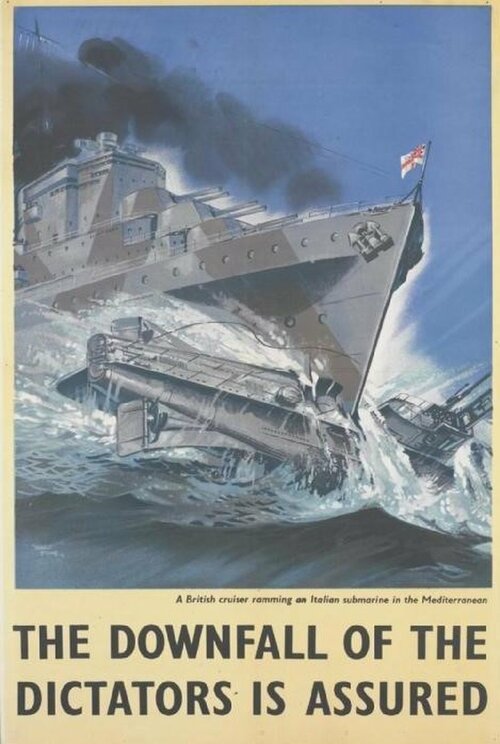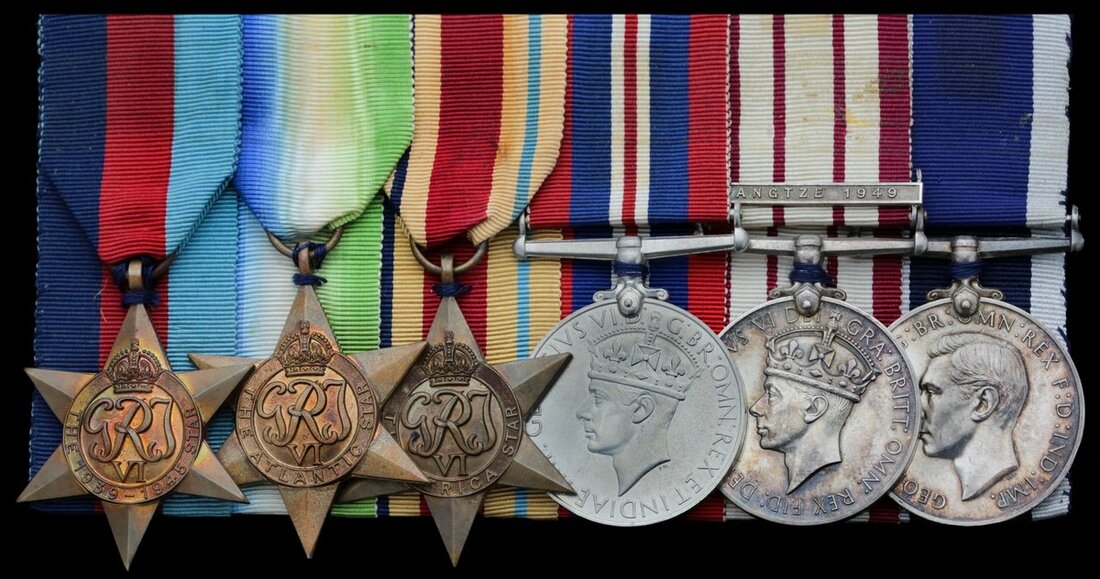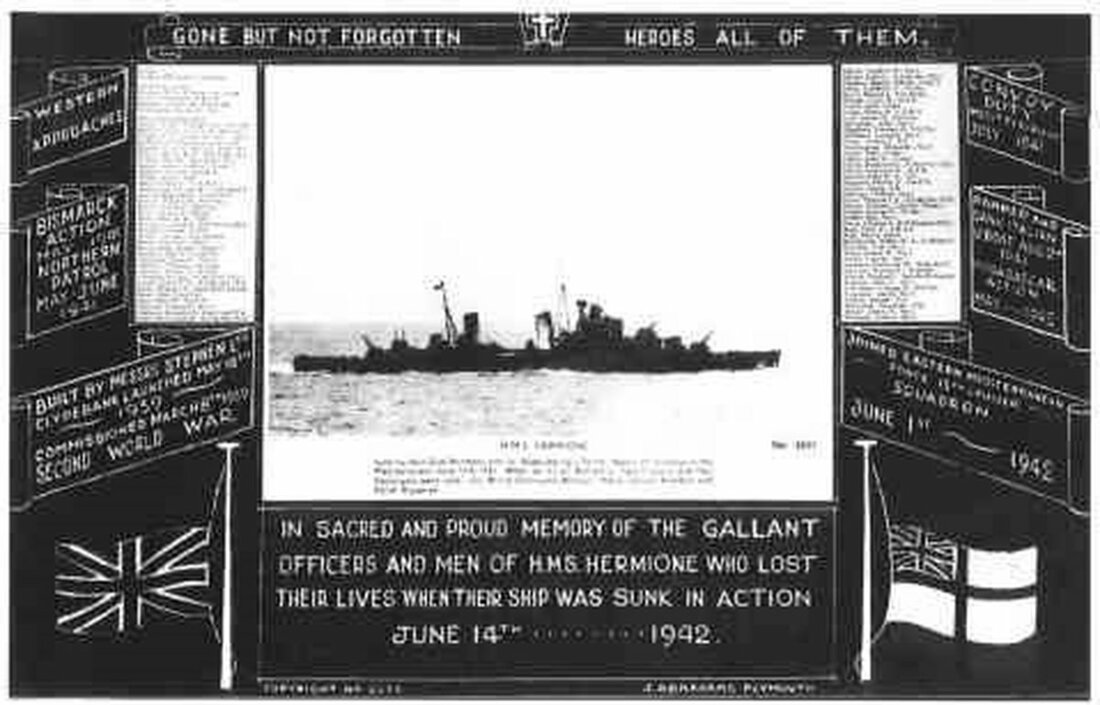Auction: 21003 - Orders, Decorations and Medals
Lot: 392
A Second World War and Yangtze incident campaign group of six awarded to Petty Officer E. G. Doney, Royal Navy
Having seen extensive action in the light cruiser H.M.S. Hermione on the Malta run - and survived her loss in June 1942 - he once again came under heavy fire aboard the frigate Black Swan in the famous Yangtze incident in April 1949
1939-45 Star; Atlantic Star; Africa Star; War Medal 1939-45; Naval General Service 1915-62, 1 clasp, Yangtze 1949 (D/JX 126606 E. G. Doney. P.O., R.N.); Royal Navy L.S. & G.C., G.VI.R., 1st issue (JX 126606 E. G. Doney. P.O., H.M.S. Drake), minor contact marks, good very fine (6)
Edward George Dooney was born in Cork on 14 May 1910 and entered the Royal Navy as a Boy 2nd Class in April 1926. By the outbreak of hostilities in September 1939, he was serving as an Acting Leading Seaman in the cruiser H.M.S. Norfolk.
Quickly deployed in pursuit of the Gneisenau, Scharnhorst and Admiral Scheer, Norfolk was damaged by the detonation of 'near-miss torpedoes' from the U-47 and made for repairs at Belfast. Re-joining the Home Fleet at Scapa Flow, she sustained further damage in a heavy air raid on 16 March 1940.
Dooney was next drafted to the shore establishment Drake I in May 1940 and gained advancement to Acting Temporary Petty Officer at the year's end. Then in March 1941, he joined Hermione, a recently launched light cruiser.
Mediterranean - the Malta run
Her 'working up' period completed in May 1941, Hermione joined the 1st Cruiser Squadron in the Mediterranean Fleet - as part of Force 'H' - and was quickly deployed in escorting the carriers H.M.S. Ark Royal and H.M.S. Furious, bound from Gibraltar to Malta, laden with fighters bound for the beleaguered island.
In July, Hermione operated as cover for Ark Royal - and the battleship Nelson and cruiser Renown - during an attack on the enemy airfield Aghero, Sardinia. Later in the same month she participated in the famous Malta convoy, Operation "Substance", in the course of which she went to the rescue of a merchantman and the destroyer Nestor, both under sustained enemy attack; her gunners shot down two enemy aircraft.
On 2 August 1941, the Italian submarine Tembien was spotted by one of the Ark Royal's aircraft, and Hermione rammed and sank her in spectacular fashion.
In September, Hermione again escorted the Ark Royal, enabling aircraft to be flown off for the defence of Malta, in addition to participating in another well-known Malta convoy, Operation "Halberd".
In March 1942, following the loss of Ark Royal, a renewed attempt was made to fly off aircraft to Malta, this time from the carriers Argus and Eagle but, due to adverse weather conditions, they had to call off the attempt. Later in the month the operation was repeated, and 16 Spitfires reached Malta under the watchful eye of Hermione; she retired to Simonstown, South Africa, for repairs.
Loss of the Hermione
Back on the Mediterranean station by the summer of 1942, Hermione was allocated to Force 'A' and, in the middle of June, participated in the hotly-contested Malta convoy Operation "Vigorous". Having expended most of her ammunition in consequence of protracted enemy aircraft attack on the 14th, she withdrew, under escort, to Alexandria.
At 23.20 hours on the 15th, U-205 spotted a group of warships north of Sollum and attacked two destroyers with one torpedo each at 23.38 and 23.40 hours, but missed. Only then did Reschke - the U-Boats's commander - recognize one of the 'shadows' as a cruiser and fired a spread of three torpedoes at 0019 hours on the 16th, hitting Hermione on the starboard side. The ship immediately settled by the stern with a list of 22° and then completely turned over on one side, remaining afloat for 21 minutes before sinking. Eight officers and 80 ratings were lost and the survivors were picked up by escorting destroyers and landed at Alexandria.
Dooney, who was admitted to 64 General Hospital in the Middle East on 26 June 1942, returned to the U.K. and was awarded his L.S. & G.C. Medal in June 1943.
Yangtze incident
'Have re-joined the Fleet south of Woo Sung. No damage or casualties. God Save the King.'
Lieutenant-Commander J. S. Kerans, R.N., H.M.S. Amethyst.
'Welcome back to the Fleet … Your bearing in adversity and your daring passage tonight will be epic in the history of the Navy.'
Admiral Sir Patrick Brind, C.-in-C. Far East Fleet.
The succinct - yet sublime - signal sent by Lieutenant-Commander J. S. Kerans, the captain of H.M.S. Amethyst, following his ship's epic escape from the grasp and guns of the Chinese People's Liberation Army in July 1949, has indeed embedded itself in the annals of the Royal Navy.
These historic signals marked the conclusion of what became known as the 'Yangtze Incident', an incident in which the Royal Navy won the attention - and admiration - of the free world. Total casualties amounted to three officers and 43 men killed and seven officers and 87 men wounded, the Royal Navy's greatest loss of life during peacetime operations.
The exploits of H.M.S. Amethyst have rightly found a place in the annals of the Royal Navy, for they epitomise the high standards of the Senior Service in the face of great adversity. Likewise, the exploits of Black Swan, Consort and London are worthy of high praise, all three ships making plucky attempts to come to the rescue; just how plucky may be gleaned from their casualty returns.
That such a small-scale, post-war incident resulted in media coverage on an unprecedented scale is surely a mark of equal esteem, albeit under an umbrella of trying international relationships. The conduct of all those personnel ensnared in the gunsights of a belligerent communist opponent - an enemy blessed with the advantages of armament and surroundings and devoid of the usual rules of conflict - was indeed sublime.
Dooney's part in the incident commenced at Hong Kong in September 1947, when he was drafted to Tamar and thence, in November 1948, to the frigate Black Swan.
When Amethyst's potential fate became known, the cruiser H.M.S. London (Captain P. G. L. Cazelet, R.N.), and the frigate Black Swan (Captain A. D. H. Jay, D.S.O., D.S.C., R.N.), were ordered to proceed upriver to her assistance.
The attempt was made on 21 April but so severe was the fire from the Communist-held shore batteries that the anticipated rescue had to be abandoned. Just how severe may be gleaned from the resultant casualties, namely 15 killed and 17 wounded in the London, in addition to 12 wounded in Black Swan, both ships suffering severe damage to their superstructure.
Dooney was likely relieved to be pensioned ashore in June 1950.
Subject to 20% VAT on Buyer’s Premium. For more information please view Terms and Conditions for Buyers.
Sold for
£1,700
Starting price
£600









